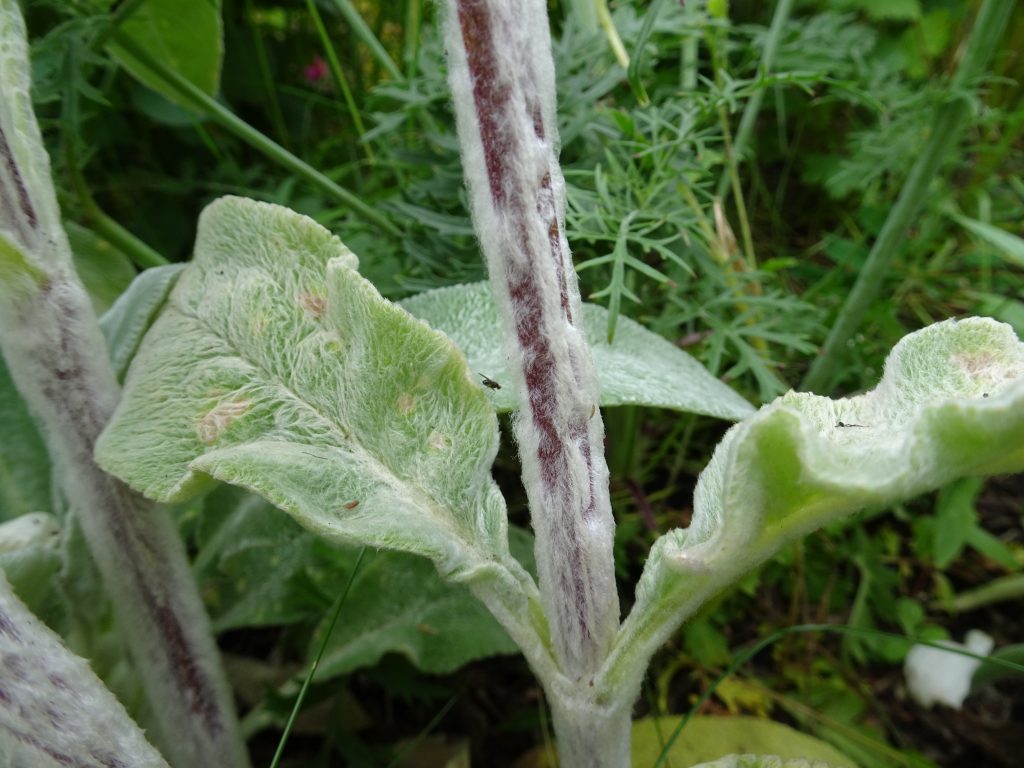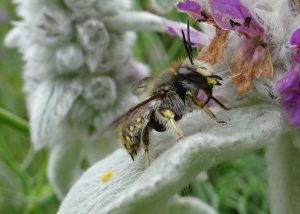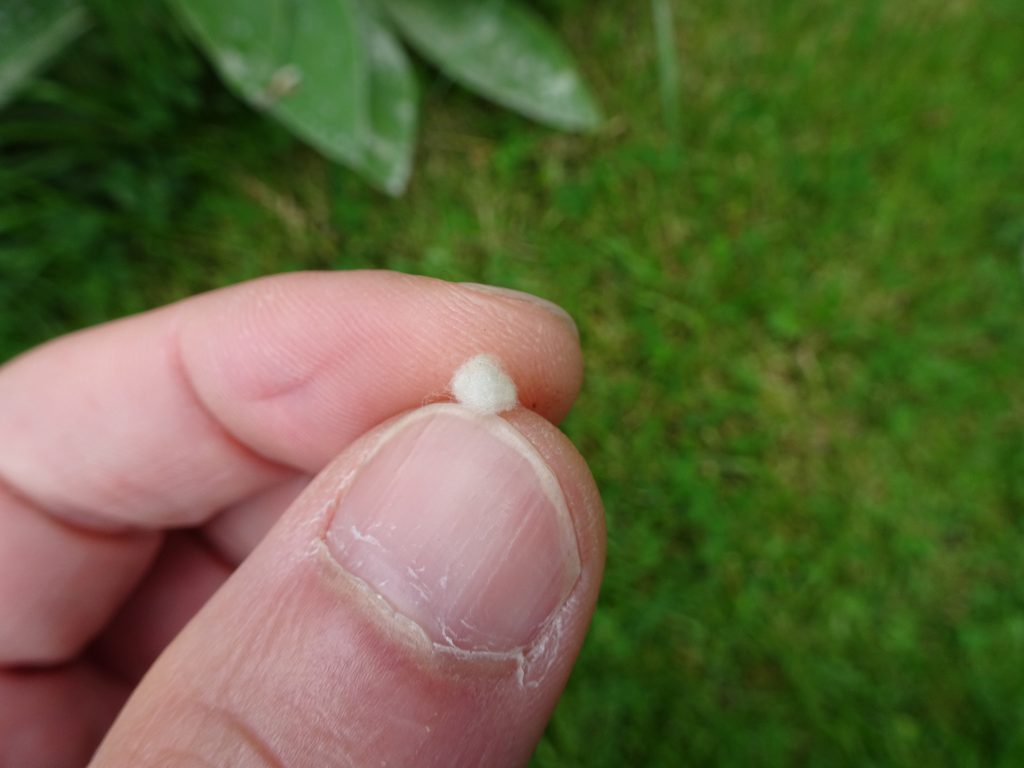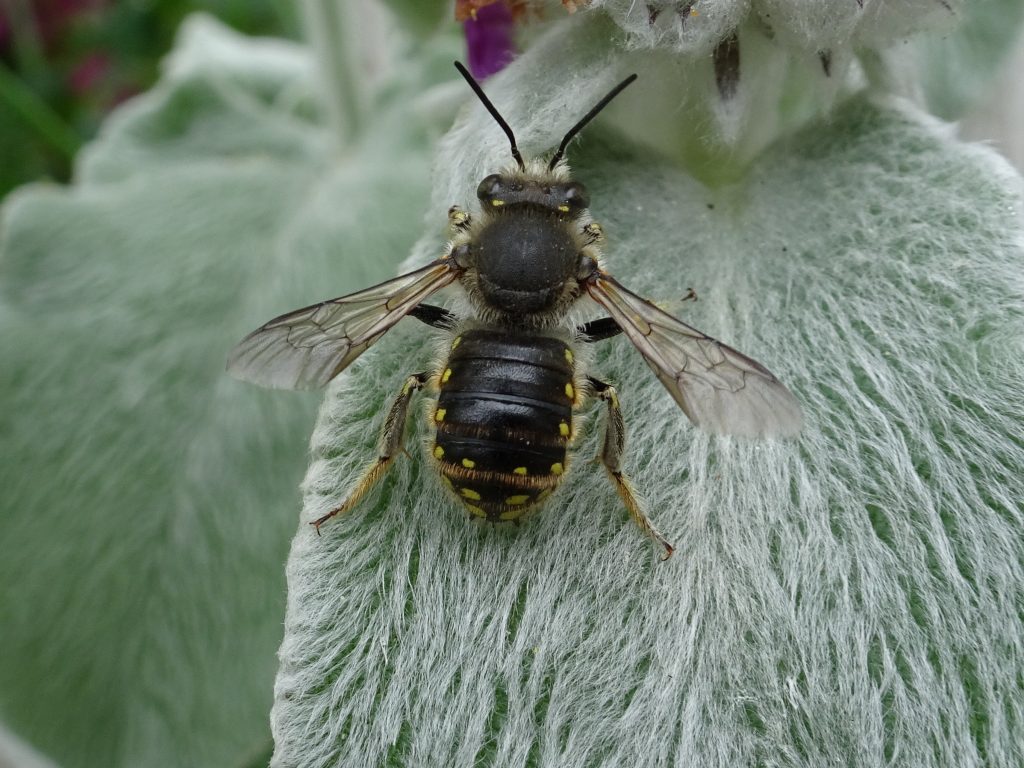The wool carder bee (Anthidium manicatum) is one of the most distinctive solitary bees that lives in the Garden. During July and August the Demonstration Garden and the Rock Garden are good places to look for these lively territorial solitary bees. Your best chance of seeing a wool carder bee will involve first locating the woolly plant that the bee has a special relationship with – lamb’s-ear (Stachys byzantina). Female wool carder bees hunt out this plant and others, such as Stachys alpina, in order to harvest hairs for the construction of their nests. Four beds of Stachys have been specially planted to encourage wool carder bees within the Fruit Garden. Weather also plays a part as the bees are more active on warm sunny days. The short video below shows a female bee harvesting hairs.

Stem of lamb’s-ear showing bald patches due to the wool collecting activity of female wool carder bees.
This bee is worth looking out for as it is relatively new to Edinburgh, with the first sighting in the City made on 22 July 2011 at the Botanics. All previous records of this species in Scotland are from Dumfries and Galloway, and quite how it reached Edinburgh is unknown. However, it is clearly at home here as subsequent sightings have shown it to be established in Blackhall, Broughton, Leith and Craigentinny. This year it was spotted for the first time in the gardens of Holyrood Palace.
The bee itself is not obviously marked, although yellow dots on either side of the abdomen are worth looking for. What is most striking is some curious behaviour. The males can establish a small territory that they patrol, often returning to a favoured spot to rest. Intruders that are not female wool carder bees are attacked and chased out of this territory. During patrols the males can hover motionless in the air just like a hoverfly. This hovering is one of the best ways to spot wool carder bees for the first time. The females are smaller and generally go about their business of harvesting small balls of hairs and stocking their nests with pollen and nectar to feed their young.
Curiously, not all males establish a territory. Smaller males that might be mistaken for the obviously smaller female bees seem to persist by adopting a sneaky mating strategy that involves none of the effort of defending a territory.




Nathalie Centeno
Appreciating the persistence you put into your site and in depth information you present. It’s good to come across a blog every once in a while that isn’t the same out of date rehashed material. Wonderful read! I’ve saved your site and I’m including your RSS feeds to my Google account.
Max Coleman
Dear Nathalie,
Glad you liked the post about wool carder bee. Just in case you are around between 7-13 April we will be running a daily drop-in about bees as part of our Science Festival programme. Find us in the John Hope Gateway.
Max